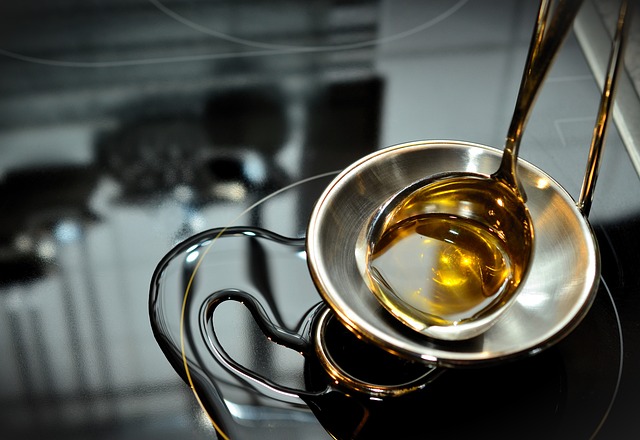How to make vitamin E oil for skin? Making your own skin vitamin E oil can be a fun and affordable way to naturally moisturize and nourish your skin.
Vitamin E is one of the most powerful antioxidants in the body. It helps protect and heal skin cells, promotes healing, and reduces inflammation.
How To Make Vitamin E Oil For Skin
Here’s a step-by-step guide on how to make vitamin E oil for skin at home:
1. Gather your ingredients
To make vitamin E oil, you’ll need:
- Vitamin E capsules or liquid vitamin E
- Carrier oil (such as jojoba oil, almond oil, coconut oil, or olive oil)
- A small glass jar or bottle for storage
2. Choose your carrier oil
Carrier oils act as a base for diluting vitamin E and help deliver its benefits to the skin.
Different carrier oils offer unique properties, so choose one that suits your skin type and preferences. For example:
- Jojoba oil is lightweight and non-greasy, making it suitable for all skin types, including oily and acne-prone skin.
- Almond oil is rich in vitamins and minerals, making it ideal for dry or sensitive skin.
- Coconut oil is deeply moisturizing and has antimicrobial properties, making it suitable for dry or irritated skin.
- Olive oil is rich in antioxidants and hydrating properties, making it beneficial for mature or dry skin.
3. Prepare your container
Clean and sterilize a small glass jar or bottle to store your homemade vitamin E oil. Ensure that it is completely dry before adding the ingredients.
4. Extract vitamin E
If you’re using vitamin E capsules, carefully puncture the capsules with a sterile needle or pin, and squeeze the contents into a clean bowl. If you have liquid vitamin E, skip this step.
5. Mix with carrier oil
Determine the desired concentration of vitamin E in your oil blend. For a standard concentration, aim for about 1-2% vitamin E in your carrier oil.
For example, if you’re making 1 ounce (30 mL) of vitamin E oil, you’ll need approximately 6-12 drops of vitamin E oil for a 1% concentration or 12-24 drops for a 2% concentration.
Add the extracted vitamin E or liquid vitamin E to your chosen carrier oil in the glass jar or bottle. Use a clean utensil to mix the ingredients thoroughly.
7. Store and label
Seal the container tightly and store it in a cool, dark place away from direct sunlight and heat. Exposure to light and heat can degrade the vitamin E and reduce its efficacy.
Label the container with the date of preparation and the ingredients used for future reference.
8. Use your vitamin E oil
Your homemade vitamin E oil is now ready to use! Apply a few drops of the oil to clean, dry skin and massage gently until absorbed.
You can use it as a facial moisturizer, body oil, cuticle treatment, or hair conditioner.
Incorporate vitamin E oil into your skincare routine regularly for best results. It can be used alone or mixed with other skincare products to enhance their benefits.
9. Considerations
- Perform a patch test before using vitamin E oil on larger areas of your skin, especially if you have sensitive or allergy-prone skin.
- Discontinue use if you experience any irritation or adverse reactions.
- Store the oil in a dark-colored glass container to further protect it from light exposure.
A Word From GetMe Treated
By making your vitamin E oil at home, you can customize the blend to suit your skin’s needs and enjoy the natural benefits of this antioxidant-rich ingredient for healthy, radiant skin.
How To Make Vitamin E Oil For Skin FAQs
How do they make vitamin E oil?
Vacuum distillation of vegetable oils made from soybeans that are not genetically modified.
Does vitamin E lighten the skin?
There’s no proof that Vitamin E will lighten your skin by itself.
What not to mix vitamin E with?
Statins and niacin
What is the best combination with vitamin E?
vitamin C
What is the main ingredient in vitamin E oil?
D-Alpha Tocopherol, D-Alpha Tocopheryl Acetate, and D-Alpha Tocopheryl Sucinate are the common names for natural vitamin E.
How do you know if vitamin E is real?
Natural vitamin E is referred to on a supplement label as d-Alpha Tocopherol (DAO), d-Alpha Tocopheryl Acetate (DAO), or d- Alpha Tocopheryl Sucinate (TAUC).
How to make vitamin E cream at home?
Aloe Vera Gel Aloe Vera gel Aloe Vera milk Aloe Vera vitamin E oil Vitamin E oil Aloe Vera moisturizer Moisturizer Aloe Vera Aloe Vera Milk Aloe Vera Vitamin E Oil Vitamin E Oil Aloe Vera Moisturizer
Other Helpful Blog Posts:
- How To Use Rose Water For The Face
- Best Hair, Skin, And Nails Vitamins
- What Are The Health Benefits Of Pawpaw Seed
- How To Use Turmeric To Brighten Skin Rongdhono
- How To Use Turmeric To Clear Up My Skin Breakouts
- Why Should I Eat Cucumber At Night?
- Why It Might Be Better To Sleep In Separate Beds

